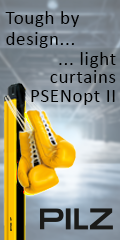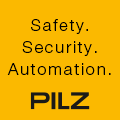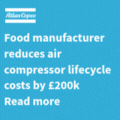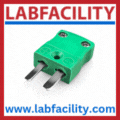
Posted to News on 28th Apr 2014, 00:00
Servo inverters provide impetus for label converter innovation
The future of machine programming is FAST, as ABG reduces design time and costs with Application Templates from Lenze.
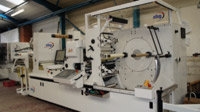
>AB Graphic International, a global manufacturer of label converting and finishing equipment, have set a new standard with the latest generation of their machines. At the same time, by using FAST Application Software from Lenze, the company has significantly speeded up the software design of their machines. The resulting faster delivery times and lower engineering costs not only provide the company with an edge over the competition but, thanks to an integrated standardisation process, it now forms the backbone of ABG's machine programming.
>"We always use the latest technology available," reassures Mark Norman. The controls manager at ABG has been using Lenze's 9300 servo drives for over 13 years and had every reason to embrace Lenze's latest products to speed up machine development. Like all machine builders, he needs to stay ahead of the game. "The label printing industry is rapidly changing due to the digital revolution. Production runs get smaller with a growing demand for custom, localised labelling. Digital printing machines are replacing conventional flexographic presses and there is a growing need for PC-based systems.
>"But our customers also expect improved winding quality, faster changeover times and more reliability. This means that we look to servo technology and software to help us out. And although I realise that full servo is somewhat of a buzzword, in our case it offers unrivalled mechanical flexibility and precise tension control. We are therefore replacing more and more mechanical systems with the latest i700 servo inverter from Lenze. And to help us out with software development, we recently adopted their Application Template and FAST function blocks."
>
Job definition format
The initial impetus for taking a good look at their machine design and developing a new generation of label converting systems based on the latest technology available was a specific request from the printing industry: to be 'JDF compatible'. Norman explains: "In the printing industry, the JDF Job Definition Format is used to describe the entire job content. For instance a JDF message can hold prepress parameters, label size, slit width, slit quality and roll size. This is all information that we can use to automatically set up our machines without operator intervention, and it enables our customers to run smaller batches with faster changeover times.">Label converting machines process a large reel of label stock or film into finished smaller reels or sheets of labels. There are many functions involved such as unwinding, slitting, inspecting and rewinding. Finishing processes include die cutting, varnishing, hot foil stamping, embossing and laminating. For the rewinding machines to be able to read JDF files required a PC-based approach. AB Graphic International needed Ethernet and server capabilities. These needs were met by Lenze's VisiWinNET visualisation software platform that, besides SCADA, also includes server/client technology. But why stop improving here, when there are greater gains to be achieved?
>
Hardware upgrade
At about the same time that ABG was working on its fully automated and JDF compatible design, Lenze introduced its i700 servo inverter. For ABG, this seemed like the perfect opportunity to upgrade their hardware to a more consistent platform with a much more straight-forward topology. Norman comments: "One of the obvious hardware upgrades that we were keen to pursue, was the replacement of the old 9300 servo drives by the new i700 inverters. This proved to be a wise choice, as the installation time is now reduced by at least 25 percent.>"The main reason for this reduction is that the wiring takes far less time, as we can easily interlink the DC power supply bus and the EtherCAT connections, and no circuit breakers or individual mains supplies need to be installed, providing additional time savings."
>The introduction of the i700's also substantially reduces the cabinet footprint. "The i700 has both double-axis and single-axis drives and it is more compact than its predecessor," says Norman. "This means that our required cabinet size is reduced by 15 to 20 percent. There have also been improvements on the HMI side: We have replaced our previous HMI with the model p500 from Lenze and are using their smaller EL103eco for localised controls. The biggest benefit of using a more integrated hardware platform from one supplier is that all the tags for VisiWinNET visualisation have already been generated in the PLC Designer software via a symbol file. This also saves a lot of time."
>One of the greatest time savers is however still to come. A more straight-forward machine structure paved the way for a modular approach that enabled ABG to program different hardware elements (modules) just once and reconfigure them for later projects. Some of the modules have been further simplified by using Lenze's FAST Application Software which already has a variety of application specific, ready-to-use templates designed to tackle common elements in targeted industries. "One of the key aspects when revising your automation hardware as drastically as we did, is getting the software right," says Norman. "One of the tools that Lenze suggested for this task was their Application Template software. It offers a modular structured approach that saves a lot of time and reduces errors by a consistent methodology which involves more configuration than programming.
>"To get started, we made a functional breakdown of our machine specification into modules. We identified common modules as our basic building blocks through which we can configure most of our machines. After they have been programmed, we configured all the axes related to the module. We subsequently linked all modules to a machine master, which sets the modules into the required mode or state through the Application Template."
>The project also included a virtual master axis which all the other axes within the Application Template followed. Norman adds that the approach makes their software truly modular, as the individual modules are effectively programs that run autonomously in their own right, meaning that they can be easily exchanged and independently tested, enabling parallel engineering. When asked about the main difference between copying and pasting proven lines of code from old projects compared to the reusability of the Application Template methodology, he explains: "The big difference is the fact that all the variables including I/O and HMI data are declared as structures within the module. This is not the case when you copy/paste."
>
Future fruits
At this stage, it is hard to quantify all the gains of the FAST modules and Application Template approach for ABG engineers. The first machine is running smoothly in France, further installations are working well and more machines are in production. There are nevertheless plenty of aspects to qualify and Mark Norman is convinced that using the FAST modules and Application Template is the right way forward. "Despite some challenges, which were resolved by Lenze listening well and responding thoroughly to us, I am positive that the new Lenze FAST approach will live up to its name when it comes to speeding up machine programming," he says. "We have already experienced this success with some of the modules.>"The quality of the performance has also improved. Instead of a web encoder, using a virtual master combined with the FAST 'Winding' module has, for instance, resulted in the control of web tension being even better than the high standards previously achieved."
>It is this quality aspect that might be the true advantage of using the standard software modules. "It's been a pleasure using pre tested FAST modules that have been developed by Lenze so that the end user only has to configure the functionality rather than writing and testing complex code. We also see a large benefit using standard function blocks in terms of getting worldwide support from Lenze."


